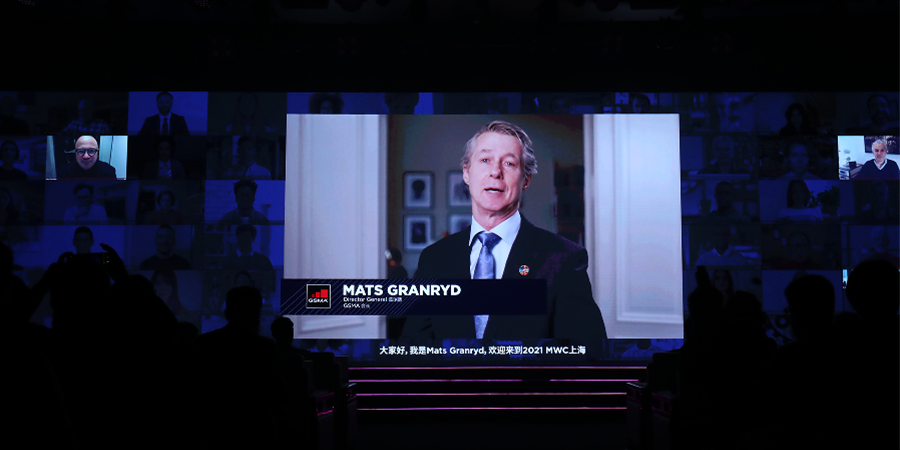While we hanker for the good old days of networking at industry events, the hybrid format for now is the best avenue to learn and connect. But there are far too many virtual events and the audience is getting very fatigued. It has also become harder for events to stand out and for audiences to stay attentive. How can we get the formula right?
iTNews Asia speaks to Veemal Gungadin, CEO of GEVME, as he reflects on the MICE industry one year into the pandemic and looks at the trajectory and transformation of events as the virtual dimension of events matures.
iTNews Asia: With many borders closed and travel restrictions still controlled, large scale regional exhibition and event planners are caught between a rock and a hard place. How sanguine are you about large-scale events in APAC this year?
The truth is that it is still just a guessing game. That's a game we've played since last year, and here we are again. Nobody can say for sure when things are coming back. We've been hearing people that say physical, larger-scale events are going to come back, but then again, roadblocks pop up often.
Even though vaccinations are being rolled out globally, there have been delays -- like in Europe, for example. In fact, these roadblocks are popping up everywhere. While countries like Singapore are responding to the situation well, much of the world is not. And that is bad news for the meetings industry, especially in the MICE industry, it relies on getting people travelling.
Essentially, things are not going as smooth as planned. My take on this is that things are going to take longer, though I can't say for sure how much longer.
On a bigger picture perspective, the upcoming World Economic Forum happening in August is going to be the big statement. It's a big, global event, with people coming from all over the world. A lot of eyes are on it as the milestone event. If it proves to be successful, the hope is that it will mark the return of larger-scale events.
iTNews Asia: For much of 2020, there were concerns if a virtual model could work but we have seen big-name tech conferences taking place digitally. Mobile World Congress Shanghai last month seem to have gone without hitches and Singapore has announced Asia Tech X as a hybrid event this July. Is the integrated format now the way to go? Can virtual fully replace the convenience and intimacy of a physical connection?
Here's the thing: Nobody really liked virtual events. We were forced to adopt it. And, as the pandemic keeps on going on, we will see more events go virtual or hybrid out of necessity.
As a result of this, forced innovation is happening because people must adapt to virtual. Attendees are finding ways to cope with the transition, to make it work. Organisers are trying to design experiences. Tech providers are coming up with a slew of solutions to try to tackle a critical issue: How to get people and brands to connect in a meaningful way in a fully virtual world.
We're not there yet, but we're getting there; virtual experiences are getting better and better. If you asked someone to compare an event they attended early last year, and events they are attending now, the events now are probably better than the ones they attended before.
That said, I don't think virtual events will fully replace physical events. Just look at retail, for example. Supposedly, e-commerce should have shut down all physical retail shops. But, what ended up happening is that retail shops are still here, but they've had to transform. Now, we have new forms of retail shops. We can use the word hybrid here as well -- because most of them now have an e-commerce form.
Some retail stores are twining together both online and offline experiences: You browse the catalogue online, and if you really want to try the product, you go to the physical store -- then if you don't like it, you don't have to buy it. These are new models of shopping that have been created to embrace the digital aspect.
Physical will never go away; virtual will never be able to fully replace it. But, will physical meetings be changed forever? Yes. I think there will be a digital component to every meeting that happens in the future.
It's no longer virtual vs. physical. It's about embracing virtual and digital technologies to complement what's really unique about the physical experience -- the irreplaceable face-to-face experience.

Embrace virtual and digital to complement what's unique about the physical experience
iTNews Asia: At the same time, the virtual event space is growing more saturated, and we are seeing attendee fatigue: Everyone has a similar format. Are we still learning how to do this right? What do you see as the next stage for the industry?
We've talked a lot about meeting fatigue. In fact, meeting fatigue is getting a lot of people thinking; it's why we think there's a need for Next-Generation virtual events.
Last year, when the pandemic hit, lots of companies were not prepared, but the show had to go on. There was a mad scramble for what tools to use, how to build an experience for attendees — and there wasn't much time. Because of that, people turned to meeting software. However, meeting software is really designed for meetings, not to provide an environment for events.
Meetings are a part of events, but there are other components: Browsing around, networking and chatting with people — that element of serendipity where you can make connections with people.
We think the next stage for the industry is building events in the virtual space that are unique.
No two events should be the same. The question now is: How do you make that happen in an easy way for each and every event, without having to build something from scratch, or spending a lot of your time and budget? It's like how websites on the Internet are different, because each website wants to have its own identity — each event has to be unique and memorable.
iTNews Asia: How critical a role have the use of digital tools, such as AR and virtual 3-D environments, been to enhance the event experience? What has been GEVME’s experience and what lessons have you learnt from the introduction of these digital tools?
Lots of these technologies, like 3D worlds, AR and VR, have been around for a while now, but they haven't really been adopted.
Speaking for myself here, in the beginning of 2020, I thought that 3D was gimmicky; we don't need a 3D experience to do a virtual event. But: An event is not the same as a meeting. You want an element of discovery, of serendipity. How do you create that if everything is super-optimised?
Websites can be very transactional: A lot of research has been done as to how to funnel users to the one call-to-action button -- the sign-up or buy-now form. But, people coming to events aren't necessarily looking for this super-optimised experience: they are looking for serendipity, the connection with people, a sense of wonder. That's where 3D, immersive worlds work well.
We've been hearing this from our customers, who want to do things with 3D worlds, AR and VR. That forced us to innovate along this line -- and now we have fully embraced this. Our platform, GEVME, is now the platform where we can build your own 3D experiences in an easy way. GEVME is a platform that makes it easy for event owners and organisers to spin up a 3D venue without much effort.
iTNews Asia: How easy has it been for exhibitors and MICE organisers to adapt to new technologies?
There was lots of hesitancy at the beginning of last year. Back then, it was a wait-and-see game, because a lot of people thought things would come back to normal after a couple of months. Then, when reality hit that normalcy wouldn't return anytime soon, we started seeing MICE stakeholders scrambling to find the right tools and technology.
I can probably categorise these people into two categories:
- One group didn't want to have anything to do with technology. They had the firm belief that the physical event couldn't be digitised in any way.
- Another group fully embraced virtual, and then reinvented themselves, restrained their staff, and even invested in new hardware and technology. Some event organisers have transformed their offices to recording studios, recruiting people to build their 3D capabilities.
At this point, it seems like the investments of those who embraced the change seems to be paying off.
iTNews Asia: What do you see as the future of events? What will the MICE industry like in the next one to three years?
In one word: Hybrid. The future is hybrid. Every event will have a digital component to it, and it could even be that the virtual component will get bigger than it is now.
More importantly -- and I think that's the holy grail right now to the events industry -- is that there are new monetisation techniques being made available with regards to all sorts of events, from trade exhibitions to conferences. For example, some conferences that used to charge ticket fees are now moving to a subscription model: Rather than one big annual conference, they do a series of twelve monthly sessions. We are starting to see new models being trialled.
Merchandising too is changing: Going digital is making things frictionless. Imagine that you are at a conference and you're listening to a fantastic speaker who just released an eBook. You're inspired, and you think, "Hey, I should read the book." Then, you go home, get distracted, and forget to buy the book.
If you are watching the same thing online, and while the speaker is speaking you see the link to buy their eBook -- chances are, you will buy the book. Digital facilitates frictionless purchases. And this example is not the only kind of scenario, it can apply to many different kinds of events, from B2B to B2C and so on. These will provide new ways, new formats, and new monetisation opportunities.
All of these are being trialled now by different people. Very soon we will see winning patterns emerging, and that will pave the way for the next three years. I think we should look towards the possibilities coming up with some optimism: The parties who end up winning are the attendees. They can save time, save costs, and have better experiences.
.png&w=800&c=0&s=1)








